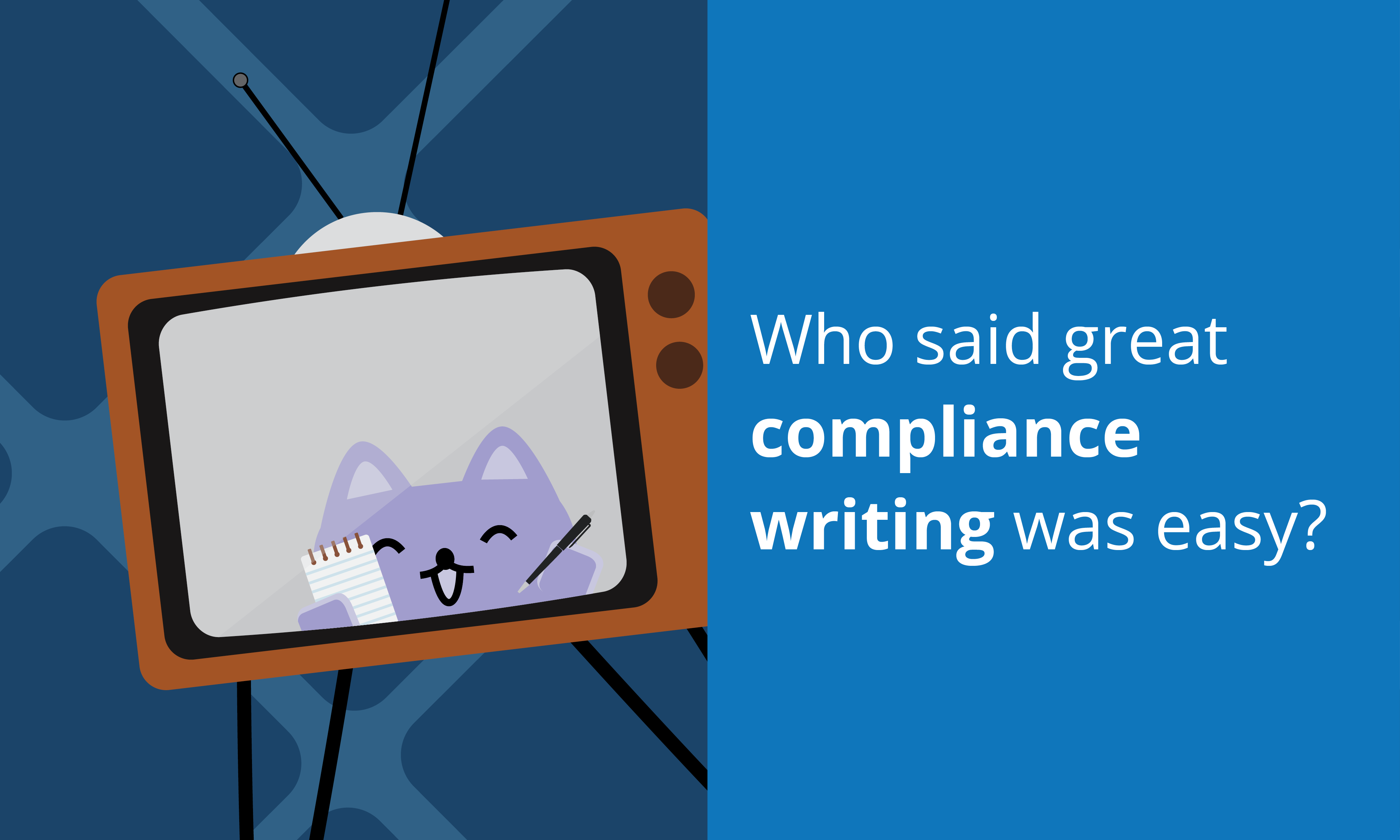
Who said great compliance writing was easy?
My mom has a way of always picking out just the right card for every occasion. My very favorite one wasn’t your typical thinking-of-you or hang-in-there cat-poster kind of card. It was irreverent, funny, and touching all at the same time. I still have it. See…
I’m only showing you the front cover because the inside is just for me.
When I look at it with my compliance-training-communications hat on, what strikes me about the card is its balance. It’s readable. It’s funny. It connects me to familiar things. But one thing it’s not? Ordinary.
It's smartly done. It's so good, in fact, that it seems like it was effortless to write. I know there's a bit of nuance here, but hear me out: yes, it probably was easy to write. The thing is, for the author to get to that level, it probably required years of practice to make it look easy.
Have you ever thought about incorporating a different approach into the compliance communications you deliver to your org? Perhaps something that feels a bit more straightforward, approachable, and dare I say, entertaining? You should! And we totally support that, so we’re going to share a bit about how to do it.
🚨 Warning! 🚨 Adopting this tone of voice for your compliance materials can be mistaken as “not taking things seriously.”
Hey, we’ve even been accused of that! *hurtful* | Source: Absolutely Fabulous via Giphy.com
But that’s ok; we’re confident in what we’re doing. Why? Because aside from the cheerful aesthetics, at the heart of all our training and communications products are two very important things: a focus on behavior, and a clear expected action.
So, you want a little peek behind the curtain?
You got it, dude! 👍 | Source: Full House via Giphy
First, we answer these questions:
- What is the specific, problematic behavior?
- What is the right behavior?
The answers become our true north and ground us as we work on the communication, and we work hard to keep them tight, clear, direct, and honest.
If you start to employ these questions as you develop your messages, you’ll notice that your content will no longer be generically applicable to a risk area, but rather points to a specific change you want to see within the business and how employees behave. If you don’t maintain discipline in your communications, you’ll end up trying to do too much with the limited airtime you have.
Next, we make sure we clearly understand…
- Who needs to know this?
- When does the message need to be delivered?
Once we’re good on these four items, then—and only then—do we dive into content and design. That’s when the magic happens! 🔮 And here is where we stay away from the ordinary. Push the edges. Let the creativity flow. Always stay grounded, but be open to the realization that sometimes the idea that sounds the craziest is the one that strikes gold!
I need more cowbell.
Ready to apply this methodology to compliance risk areas? Great! Your process should look a little something like this:
- Think deeply about the rules, what behaviors those rules prompt, and the right ways and the wrong ways to approach compliance with those rules that either raise or mitigate risk.
 Source: South Park via Giphy.com
Source: South Park via Giphy.com - Iterate on exactly what you want the employees in those jobs to do, when to do it, and how to do it right. Your goal is to offer simple, direct guidance and instruct on the triggers that should result in someone reaching out to compliance for support. (Pro tip! Engage your audience for feedback on this—live responses are so much better than canned laughter.)
- Put all that together in a well-designed format that simply, concisely, and effectively communicates the message. And tune in for future blogs on this!
We know it's tough. We wouldn't be around if it wasn't! Reach out and let’s talk about ways we can help you!
That's all folks! | Source: Wikimedia

